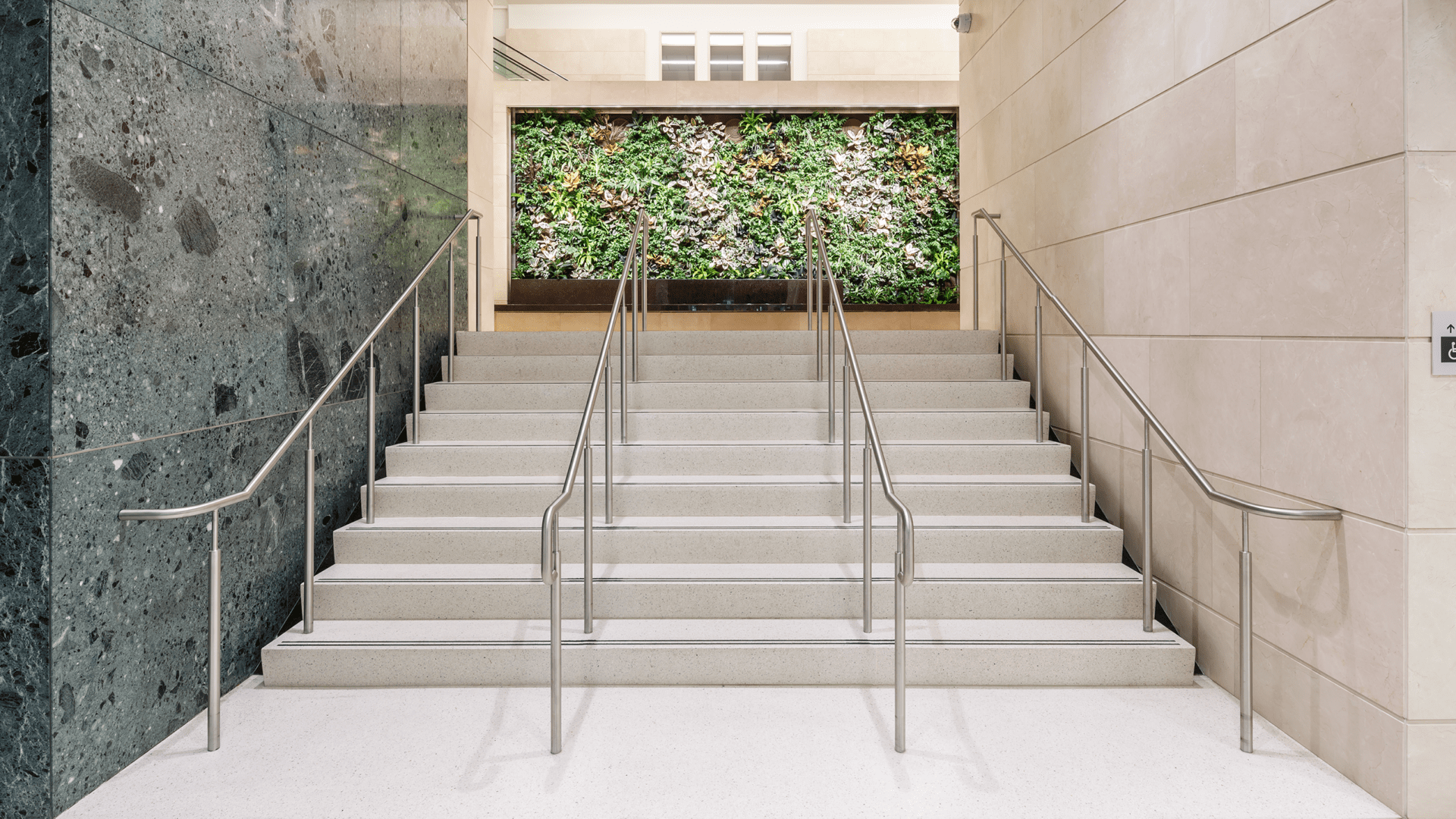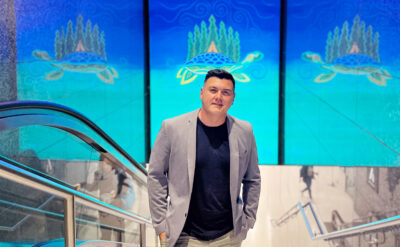Bringing a heritage building or historic space into today’s standards has many variables. Every project is unique. Consideration must be given to modern building codes in the respective regions to meet regulations, as well as improve climate resiliency and lower carbon emissions.
As part of our Blog Series titled Future Proofing Heritage Buildings, members of our multi-disciplinary team focus on innovative solutions to achieve code compliance – and a healthy building.
How is heritage design impacted by modern codes and regulations?
Hassan Saffarini, CAHP, Principal
Design generally must comply with code for all buildings, including those with heritage designation. While the latter may receive some leeway when compared to a new build, it is paramount to keep the user safe. That includes complying, with minimal exemptions, with code’s access requirements, fire protection, structural safety, etc. Typically, such need for compliance is triggered when a client applies for a renovation permit.
Chris Pal, Vice President, Engineering
The challenge in many of these buildings is that you are dealing with a masterpiece. The level of thought, care and time that a carver may have taken hundreds of years ago isn’t afforded to us in the same way. We must change our mentality and go back to being artisans ourselves to work together to deliver an outcome that aligns with the original intent. For example, a government mandate to be net zero carbon by 2050 can have invasive outcomes on the building from mechanical aspects to architectural features – but it is our job to discover those solutions from the lens of heritage design.
Chris Lance, Project Manager
The expectation of comfort is constantly evolving and as designers we need to keep up with what clients and users want. Take air conditioning in cars for example. What was once considered a luxury is now standard. Upgrading a heritage building to include better ventilation systems, heating and cooling and energy performance is a necessity to make these buildings competitive for leasing.
How can innovative solutions help older buildings keep up with modern codes?
Salil Ranadive, Electrical Engineering Manager
We have a very limited ability to grandfather systems on the parts of the code that electrical is involved with. If the new code wants an exit sign in a specific spot, there is very little flexibility from the code authority as to where that is going to be located. In a heritage building, how do we get emergency lights installed and do no harm to the building? We work with architects to build exit signs at the right doorway, work with designers to understand how to pull conduit without damaging the origins building fabric, and constantly explore new technologies like using battery operated signs. It is often the non-traditional solutions that help a traditional heritage building succeed.
Hassan Saffarini, CAHP, Principal
We are often working with an existing fabric that does not exactly conform to new codes. Take, for example, the thickness of a concrete cover over steel reinforcement, which is required to meet fire protection mandate. For a certain period of time, this cover was smaller than what is stipulated in current code. This is how these buildings were built and modifying them is neither practical nor generally necessary. We are now getting into situations where we need to show our clients and building officials that there is more to evaluating a building than the literal interpretation of the code. To be successful in our arguments, we rely on the research and science behind the code. We always endeavour to save the historic fabric from unnecessary interventions, while not compromising on the intent of modern codes.
Chris Pal, Vice President, Engineering
Most heritage design leaves room for interpretation of fire protection requirements in order to maintain the original look and feel of the building. The application of thermal innovation systems that can provide insulations of 3 inches with just a half-inch is an example that works well for heritage buildings that are bounded by the architectural features. The absence of ventilation systems and air tightness requires a very coordinated approach from every discipline at NORR to provide a comfortable and energy-efficient indoor environment while maintaining the original architectural face of the building.
Chris Lance, Project Manager
Modern code is written in a way that caters to modern design and testing to stay as low risk as possible. Understanding the intent of the code as opposed to the black and white text leads to judgement calls and professional opinions. By taking a pragmatic and common-sense approach to the inherent properties in the materials that were used originally, we can offer unique solutions or reasonable compromises to current codes and regulations. When we work in a heritage environment, common sense often prevails.
How does a holistic team approach help solve code and regulation challenges?
Salil Ranadive, Electrical Engineering Manager
When working on The Wellington Building in Ottawa, ON we were trying to determine how best to distribute electrical services across wide floor plates. If we had to distribute new power to an office space, how do we get there without a bunch of power poles dropping through an office? Do we create a sub-floor? Do we embed the conduit in an existing slab? It takes every discipline to agree on a typically simple act of putting a receptacle in the middle of an office space – due to the consideration of constructability, cost, aesthetics and the codes involved. But thanks to the cooperation of an integrated team, we are able to facilitate and come to these informed decisions and solutions.
Chris Lance, Project Manager
Owners sometimes come into a project with a wish list of what they think they need. We have a deep understanding of codes and regulations that could apply to heritage buildings thanks to the multi-disciplinary knowledge of our team. Once we understand the limitations, we are able to provide a risk matrix that shows the potential outcomes and guide our clients through the risk tolerance to instill confidence in everyone involved in the project.



